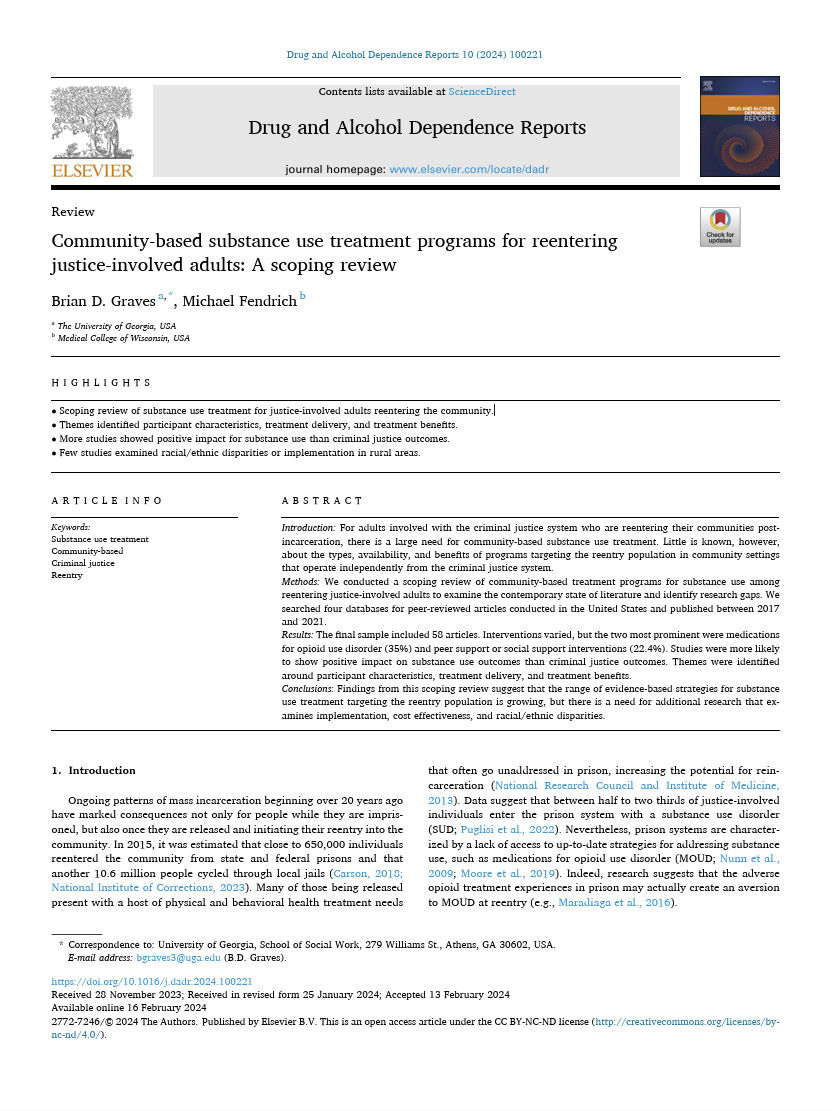Headline
A literature review describes common characteristics and reported outcomes of community-based treatment programs for people with substance use disorder reentering the community after incarceration.
Background
Adults reentering communities post-incarceration often need substance use disorder treatment. There is limited knowledge about the availability and effectiveness of community-based treatment programs that operate independently of criminal legal system agencies for this population. This review summarizes current research on community-based substance use treatment for individuals reentering the community, focusing on participant characteristics, treatment delivery models, and benefits of participation.
Findings
The review included 58 U.S.-based studies published between 2017 and 2021. Research included programs that address the diverse and complex health and social needs of the reentry population, such as HIV and homelessness. More common intervention types in the literature were medications for opioid use disorder (35%), peer and social support (22%), and case management delivered outside of a correctional setting (16%). Most studies that focused on substance use outcomes showed a positive impact (68%). Half of studies that focused on criminal justice outcomes showed a positive impact. There was less impact on areas like mental health, housing, and employment. Notably, only one study focused on contingency management, an evidenced-based, psychosocial treatment that is particularly effective for stimulant use disorders.
Policy/Program Takeaways
Community-based treatment options for people with substance use disorder reentering the community following incarceration — particularly treatments delivered by peers or involving evidence-based treatment models, like medications for opioid use disorder — may significantly address the substance use needs of adults reentering their communities following incarceration. Policymakers can consider investing in community-based interventions for this population to improve health and social outcomes, as well as potentially curb recidivism.

